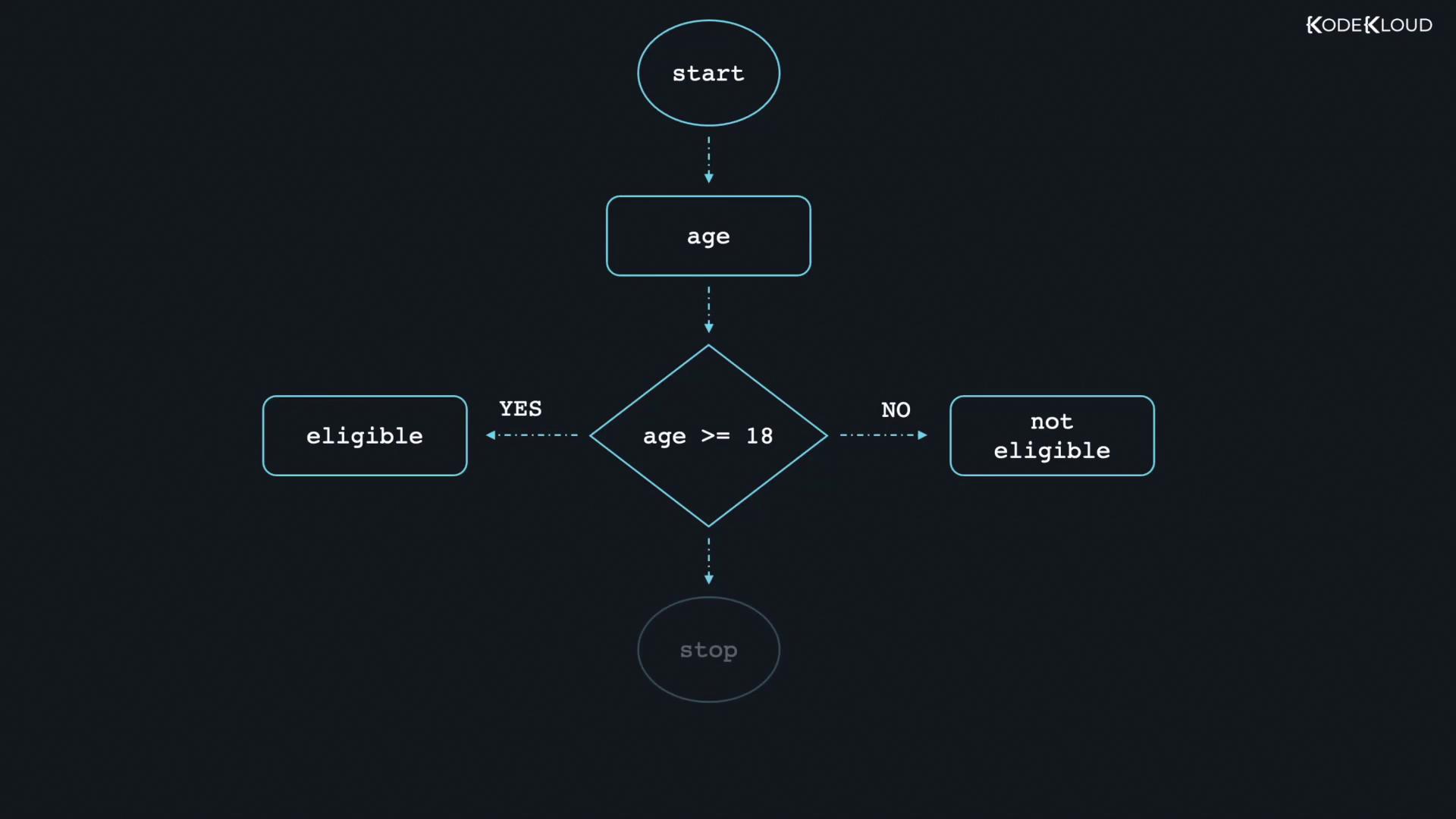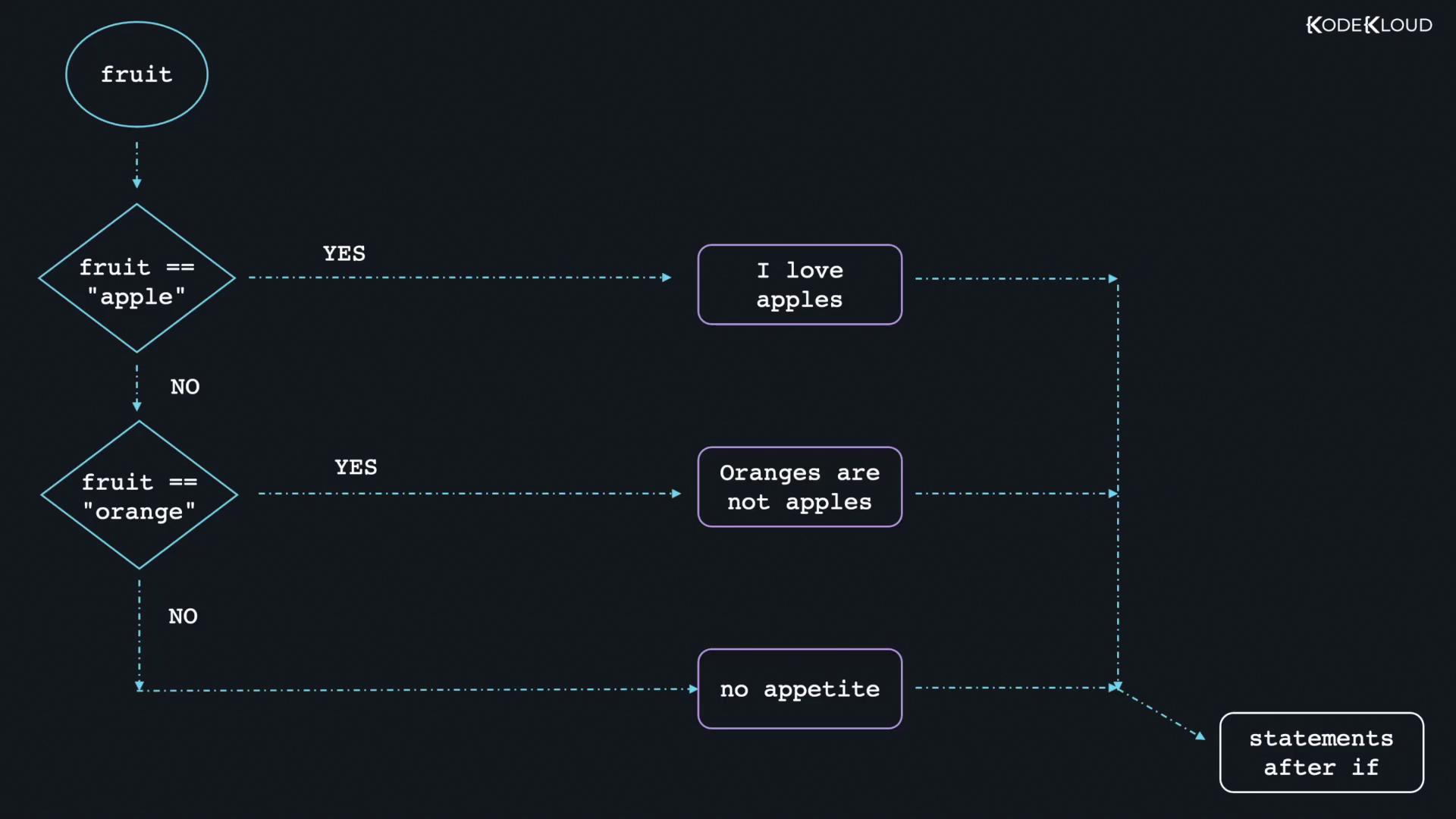Golang
Operators and Control Flow
If else and else if statements
This lesson covers control flow in programming with a focus on conditional statements in Go. We will use if-else and else-if statements to evaluate conditions and execute code accordingly. The examples in this guide validate conditions—such as checking if a user is eligible to vote based on age—and demonstrate proper syntax and structure.
Understanding Control Flow
Control flow determines the order in which instructions are executed. Instead of following a strict top-to-bottom order, the program's execution flow is guided by conditions. Consider the following flowchart that illustrates the evaluation process for determining if a user is eligible to vote:

The diagram emphasizes that control flow in programming involves branching based on evaluated conditions.
The If Statement
The if statement is used to execute code only when a specified condition is true. If the condition is false, the code block is skipped. Note that parentheses around the condition are optional in Go.
Syntax
if condition {
// Executes when condition is true
}
Example: Using an If Statement
In the example below, we declare a string variable and check if its value equals "happy". If the condition is true, it prints the value:
package main
import "fmt"
func main() {
var a string = "happy"
if a == "happy" {
fmt.Println(a)
}
}
Console output:
>>> go run main.go
happy
Since the condition is met, the program prints "happy".
The If-Else Statement
The if-else statement extends the if statement by introducing an alternative block of code that executes when the condition is false. It is crucial to place the else statement on the same line as the closing brace of the if block to avoid syntax errors.
Correct Syntax
if condition {
// Executes when condition is true
} else {
// Executes when condition is false
}
Incorrect Syntax Example
Avoid formatting the else block on a new line after the closing brace:
package main
import "fmt"
func main() {
var fruit string = "grapes"
if fruit == "apples" {
fmt.Println("Fruit is apple")
}
else {
fmt.Println("Fruit is not apple")
}
}
Console output:
>>> go run main.go
syntax error: unexpected else, expecting }
Correct Example
By placing else on the same line as the closing brace, the program executes without errors:
package main
import "fmt"
func main() {
var fruit string = "grapes"
if fruit == "apples" {
fmt.Println("Fruit is apple")
} else {
fmt.Println("Fruit is not apple")
}
}
Console output:
>>> go run main.go
Fruit is not apple
A
Note
The Else-If Statement
When there are multiple conditions to evaluate, the else-if statement provides an elegant solution. It allows you to test additional conditions if the prior ones evaluate to false. Once a condition is met, the control flow exits the conditional statement.
Structure
if condition_1 {
// Executes when condition_1 is true
} else if condition_2 {
// Executes when condition_1 is false and condition_2 is true
} else if condition_3 {
// Executes when previous conditions are false and condition_3 is true
} else {
// Executes when none of the above conditions are true
}
Example: Using If, Else-If, and Else
In the following example, the program checks the value of a variable named "fruit". Depending on the value, it prints a specific message. The corresponding flowchart visually represents this decision-making process:

Here is the example code:
package main
import "fmt"
func main() {
fruit := "grapes"
if fruit == "apple" {
fmt.Println("I love apples")
} else if fruit == "orange" {
fmt.Println("Oranges are not apples")
} else {
fmt.Println("no appetite")
}
}
Console output:
>>> go run main.go
no appetite
Since the value "grapes" does not match "apple" or "orange", the else block is executed.
Summary
In this lesson, you learned how to implement control flow in Go using if, if-else, and else-if statements. These structures allow your programs to make decisions and execute specific code based on given conditions. Practice applying these techniques to build more dynamic and responsive applications.
Keep exploring and practicing to improve your understanding of Go and control flow concepts. Happy coding!
Watch Video
Watch video content
Practice Lab
Practice lab